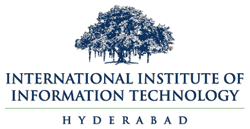Mahesh Pathakoti working under the supervision of Prof. K S Rajan published a paper on Implications of Emission Sources and Biosphere Exchange on Temporal Variations of CO2 and δ 13C Using Continuous Atmospheric Measurements at Shadnagar (India) in AGU Journal – Advancing Earth and Space Science. The other authors of this paper are:
- A L Kanchana1 and D V Mahalakshmi – Earth and Climate Sciences Area (ECSA), National Remote Sensing Centre (NRSC), Indian Space Research Organisation (ISRO), Hyderabad
- Tania Guha – Environmental Science, Department of Chemistry, School of Basic and Applied Sciences, Adamas University, Kolkata, West Bengal
- P Raja – ICAR-Indian Institute of Soil and Water Conservation, Research Centre, Koraput, Odisha
- M V R Sesha Sai1 and V K Dadhwal – National Institute of Advanced Studies (NIAS), Bangalore
Research work as explained by the authors:
Diurnal variation of atmospheric CO2 and its driving factors are studied using high-precision in situ mixing ratio measurements and stable carbon isotopic CO2 (δ 13C-CO2) for the first time over Shadnagar, a suburban site in India, from November 2018 to October 2019. The annual mean mixing ratios of atmospheric CO2 and δ 13C-CO2 are observed to be 414.76 ± 4.26 ppm and −11.19 ‰ ± 1.63 ‰. Maximum diurnal variability of atmospheric CO2 was observed in summer monsoon (17.30 ± 9.29 ppm), and the minimum was noticed in winter (7.19 ± 0.11 ppm), indicating strong seasonality in diurnal variability of amplitude. To characterize the atmospheric CO2 sources, the Miller-Tans model was implemented separately using the CO2 and its δ 13C-CO2 isotopic data during day and night. However, a strong source signature of δ 13C-CO2 was observed during the night-time of summer monsoon with a slope of −37.42‰ ± 0.73‰, obtained using a reduced major axis regression. The identified source indicates possible emissions from fossil fuel combustion. Further, a Lagrangian back trajectory analysis was performed to study the influence of transport on the observed CO2 mixing ratios. The model trajectory confirms the influence of the Indian summer monsoon on the variations of atmospheric CO2 mixing ratios. Our study shows that fossil fuel emissions are one of the major contributors of CO2 in the study location (about ∼2 to 4 ppm) with biogenic fluxes adding a clear seasonality ranging from −8 to 4 ppm.
Plain Language Summary
At a suburban site in India, the present study looked at the diurnal variation of seasonal atmospheric CO2 and its stable isotopes, 13C-CO2. We used the Miller-Tans model on seasonal data to capture the driving processes of atmospheric CO2 during day and night hours. A high source/sink signature of 13C was identified during the night of the summer monsoon. The presence of C3 ecosystem respiration and combustion is attributed as the source. Our research provided clear evidence that, in addition to short- and long-range anthropogenic impacts, changes in the isotopic composition of atmospheric CO2 during photosynthesis and biogenic respiration are related to changes in atmospheric CO2 concentration.
May 2023

